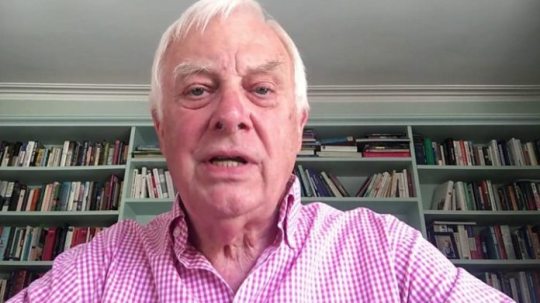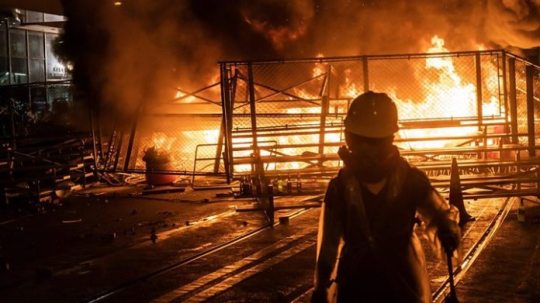#since there is still territory and nationality and rulers of death correspondent to those regions
Text
TMI Thursday.
Here’s entirely too much information:
Guano (from Spanish guano, from Quechua: wanu) is the accumulated excrement of seabirds and bats. As a manure, guano is a highly effective fertilizer due to its exceptionally high content of nitrogen, phosphate and potassium: nutrients essential for plant growth. Guano was also, to a lesser extent, sought for the production of gunpowder and other explosive materials. The 19th-century guano trade played a pivotal role in the development of modern input-intensive farming, but its demand began to decline after the discovery of the Haber-Bosch process of nitrogen fixing led to the production of synthetic fertilizers. The demand for guano spurred the human colonization of remote bird islands in many parts of the world. During the 20th century, guano-producing birds became an important target of conservation programs and influenced the development of environmental consciousness. Today, guano is increasingly sought after by organic farmers.[1]
Contents
1Composition
2History
3Sourcing
4Properties
5In popular culture
6See also
7References
8Further reading
9External links
8.1Africa
8.2Chile
8.3Peru
8.4Documents
Composition[edit]
Paul Szpak has co-authored several journal articles claiming that seabird guano consists of nitrogen-rich ammonium nitrate and urate, phosphates, as well as some earth salts and impurities, and that unleached guano from favored locales, such as the Chincha Islandsoff the coast of Peru, typically contains 8 to 16 percent nitrogen (the majority of which is uric acid), 8 to 12 percent equivalent phosphoric acid, and 2 to 3 percent equivalent potash.[2][3]
However, The Association of American Plant Food Control Officers (AAPFCO) defines Seabird guano as the hardened excrement from marine birds, which contains no organic matter or nitrogen and is a source of phosphates P2O5: "P- Hydroxylapatite - is a naturally-formed phosphate rock mineral with the formula Ca5(PO4)3(OH). The Fluorine content is less than 1%."[4]
Bat guano is fecal excrement from bats. Commercially harvested bat guano is used as an organic fertilizer.[5][6] All commercially sold bat guano is derived from insect-eating bats.[7]A study was done that demonstrated that, for fruit bats and insect bats, the composition of their guano was largely the same, and differed mainly based on their diet.[8]
History[edit]
Chincha Islands where guano was found in abundance. Mining was done on site and ships transported it to Europe.
Mining guano in the
Chincha Islands
off the central coast of
Peru
c. 1860.
Advertisement for guano, 1884
The word "guano" originates from the Andean indigenous language Quechua, which refers to any form of dung used as an agricultural fertilizer. Archaeological evidence suggests that Andean people have collected guano from small islands and points located off the desert coast of Peru for use as a soil amendment for well over 1,500 years. Spanish colonial documents suggest that the rulers of the Inca Empire assigned great value to guano, restricted access to it, and punished any disturbance of the birds with death. The Guanay cormorant has historically been the most abundant and important producer of guano. Other important guano producing species off the coast of Peru are the Peruvian pelican and the Peruvian booby.[1][3]
In November 1802, Alexander von Humboldt first encountered guano and began investigating its fertilizing properties at Callao in Peru, and his subsequent writings on this topic made the subject well known in Europe. During the guano boom of the nineteenth century, the vast majority of seabird guano was harvested from Peruvian guano islands, but large quantities were also exported from the Caribbean, atolls in the Central Pacific, and islands off the coast of Namibia, Oman, Patagonia, and Baja California. At that time, massive deposits of guano existed on some islands, in some cases more than 50 m deep.[9] In this context the United States passed the Guano Islands Act in 1856, which gave U.S. citizens discovering a source of guano on an unclaimed island exclusive rights to the deposits. Nine of these islands are still officially U.S. territories.[10] Control over guano played a central role in the Chincha Islands War (1864–1866) between Spain and a Peruvian-Chilean alliance. Indentured workers from China played an important role in guano harvest. The first group of 79 Chinese workers arrived in Peru in 1849; by the time that trade ended a quarter of a century later, over 100,000 of their fellow countrymen had been imported. There is no documentary evidence that enslaved Pacific Islanders participated in guano mining.[11] Between 1847 and 1873, there was a significant increase in Peruvian guano exports, and the revenue from this momentarily ended the fiscal necessity of the colonial head tax.[12]
After 1870, the use of Peruvian guano as a fertilizer was eclipsed by saltpeter in the form of caliche extraction from the interior of the Atacama Desert, not far from the guano areas. During the War of the Pacific (1879–1883) Chile seized much of the guano as well as Peru's nitrate-producing area, enabling its national treasury to grow by 900% between 1879 and 1902 thanks to taxes coming from the newly acquired lands.[13] Contrary to popular belief, seabird guano does not have high concentrations of nitrates, and was never important to the production of explosives; bat and cave-bird deposits have been processed to produce gunpowder, however. High-grade rock phosphate deposits are derived from the remobilization of phosphate from bird guano into underlying rocks such as limestone.[14] In 1990 a group of French researchers, from isotope studies, proposed a marine sedimentation origin for some high-grade phosphate deposits on Nauru.[15][16]
Since 1909, when the Peruvian government took over guano extraction for use by Peru farmers, the industry has relied on production by living populations of marine birds. U.S. ornithologists Robert Cushman Murphy and William Vogt promoted the Peruvian industry internationally as a supreme example of wildlife conservation, while also drawing attention to its vulnerability to the El Niño phenomenon. South Africa independently developed its own guano industry based on sustained-yield production from marine birds during this period, as well. Both industries eventually collapsed due to pressure from overfishing.[1]The importance of guano deposits to agriculture elsewhere in the world faded after 1909 when Fritz Haber developed the Haber-Bosch process of industrial nitrogen fixation, which today generates the ammonia-based fertilizer responsible for sustaining an estimated one-third of the Earth's population.[17]
DNA testing has suggested that new potato varieties imported alongside Peruvian seabird guano in 1842 brought a virulent strain of potato blight that began the Irish Potato Famine.[18][19]
Sourcing[edit]
A
herring gull
(
Larus argentatus
) excreting waste near
Île-de-Bréhat
.
The ideal type of guano is found in exceptionally dry climates, as rainwater volatilizes and leaches nitrogen-containing ammonia from guano. In order to support large colonies of marine birds and the fish they feed on, these islands must be adjacent to regions of intense marine upwelling, such as those along the eastern boundaries of the Pacific and South Atlantic Oceans.[9]
Bat guano is usually mined in caves and this mining is associated with a corresponding loss of troglobytic biota and diminishing of biodiversity. Guano deposits support a great variety of cave-adapted invertebrates, that rely on bat feces as their sole source of nutrition. In addition to the biological component, deep guano deposits from birds and bats contain local paleoclimatic records and evidence of other environmental changes in strata that have built up over thousands of years, which are unrecoverable once disturbed.[20]However, when done with caution, extraction of guano can be done alongside marine bird colonies without causing them significant harm.[21][22]
Post-depositional decomposition and ammonia volatilization of penguin guano also plays an important role in the evolution of ornithogenic sediments in the cold and arid environment of Antarctica (McMurdo Sound of the Ross Sea region, East Antarctica).[23]
Properties[edit]
In agriculture and gardening guano has a number of uses, including as: soil builder, lawn treatments, fungicide (when fed to plants through the leaves), nematicide (decomposing microbes help control nematodes), and as composting activator (nutrients and microbes speed up decomposition).[24]
High in nitrogen, guano was also refined in the early 20th century into a precursor to explosives. This caused guano islands to be of strategic significance before the First World War.
In popular culture[edit]
"Guano's historical significance was as much cultural as it was ecological and economic."[25] References to guano in popular culture are an important sign of this cultural influence, especially regarding the ongoing relationship between guano and colonialism. In his 1845 poem "Guanosong", Joseph Victor von Scheffel used a humorous verse to take a position in the then-popular polemic against Hegel's Naturphilosophie. The poem starts with an allusion to Heinrich Heine's Lorelei and may be sung to the same tune.[26] The poem ends however with the blunt statement of a Swabian rapeseed farmer from Böblingen who praises the seagulls of Peru as providing better manure even than his fellow countryman Hegel. This refuted the widespread Enlightenment belief that nature in the New World was inferior to the Old World. The poem has been translated by, among others, Charles Godfrey Leland.[27]
In Joseph Conrad's 1900 novel Lord Jim the characters Chester and Captain Robinson attempt to recruit the eponymous lead character for an expedition harvesting guano.
The setting of Ian Fleming's 1958 installation in the James Bond series Dr. No is a Caribbean guano island, and the villain dies at the end buried in guano.
In Stanley Kubrick's 1964 film Dr. Strangelove, Colonel "Bat" Guano (Keenan Wynn) leads an attack on the airbase responsible for sending a nuclear attack order to bomb the Soviet Union.
The 1994 film Men of War centers on a band of mercenaries who are hired by an investment firm to seize a tropical island for its extensive guano deposits.
In the 1995 film Ace Ventura: When Nature Calls, Jim Carrey's character attempts to save an African tribe from being dispossessed of a fortune in bat guano.
Hungarian painter Judit Reigl had a series of paintings between 1958-1964. She used to protect the floor of her atelier with old and ruined canvasses. When she moved out, she discovered that over these years the paintings developed an interesting surface, and she carved her "Guano painting" from these.
5 notes
·
View notes
Text
Hong Kong: Pompeo condemns China’s law as ‘death knell’ for freedoms
Image copyright
Getty Images
Image caption
Protesters say China’s new security law would erode Hong Kong’s freedoms
US Secretary of State Mike Pompeo has condemned China’s plan to impose a new security law in Hong Kong, calling it a “death knell” for the city’s freedoms.
China is seeking to pass a law that would ban “treason, secession, sedition and subversion” in Hong Kong.
Critics say the law would strip Hong Kong of the rights it currently enjoys, that are not seen in mainland China.
Mr Pompeo said the decision to bypass Hong Kong’s lawmakers ignores “the will of the people”.
“The United States strongly urges Beijing to reconsider its disastrous proposal, abide by its international obligations, and respect Hong Kong’s high degree of autonomy, democratic institutions, and civil liberties,” Mr Pompeo said in a statement on Friday.
Mr Pompeo’s intervention is likely to infuriate the Chinese government, whose relations with the US have been strained recently by disputes over trade and the coronavirus pandemic.

Media playback is unsupported on your device
Media captionHong Kongers give their reaction to the controversial national security law being planned
A joint statement from UK Foreign Secretary Dominic Raab and his Australian and Canadian counterparts also expressed “deep concern” at China’s proposal.
It said: “Making such a law on Hong Kong’s behalf without the direct participation of its people, legislature or judiciary would clearly undermine the principle of ‘one country, two systems’, under which Hong Kong is guaranteed a high degree of autonomy.”
In Hong Kong, pro-democracy activists have been calling for support from Western governments after China announced the law. On Friday, campaigners urged mass protests over the weekend.
The law was submitted at the annual National People’s Congress (NPC), which largely rubber-stamps decisions already taken by the Communist leadership, but is still the most important political event of the year.
Hong Kong, a semi-autonomous region and an economic powerhouse, was required to introduce such a law after the handover from British control to Chinese rule in 1997. But its unpopularity means it has never been done – the government tried in 2003 but had to back down after 500,000 people took to the streets.
Now, after a wave of sustained and often violent protests in Hong Kong last year, Beijing is attempting to push the law through. The Chinese government argues the law is necessary to “prevent, stop and punish” such protests in the future.
Hong Kong’s government said it would co-operate with Beijing to enact the law, adding it would not affect the city’s freedoms.
Why is the law so controversial?
Hong Kong is what is known as a “special administrative region” of China.
It has observed “one country, two systems” since Britain returned sovereignty in 1997, which has allowed it certain freedoms the rest of China does not have.
What is the Basic Law and how does it work?
How is Hong Kong run?
Pro-democracy activists fear that China pushing through the law could mean “the end of Hong Kong” – that is, the effective end of its autonomy and these freedoms.

Media playback is unsupported on your device
Media captionFormer Hong Kong governor Chris Patten: “UK should tell China this is outrageous”
In his statement, Mr Pompeo said any decision to impinge on Hong Kong’s autonomy and freedoms would “inevitably impact our assessment” of the territory’s status.
The US is currently considering whether to extend Hong Kong’s preferential trading and investment privileges.
President Trump has also weighed in, saying the US would react strongly if it went through – without giving details.
What is in Beijing’s proposed law?
The “draft decision” – as it is known before approval by the NPC – was explained by Wang Chen, vice-chairman of the Standing Committee of the NPC.
It consists of an introduction and seven articles. Article 4 may prove the most controversial.
That article says Hong Kong “must improve” national security, before adding: “When needed, relevant national security organs of the Central People’s Government will set up agencies in Hong Kong to fulfil relevant duties to safeguard national security in accordance with the law.”
That means China could potentially have its own law enforcement agencies in Hong Kong, alongside the city’s own.
Image copyright
Getty Images
Image caption
A group of pro-democracy activists marched on the Chinese Liaison Office in Hong Kong on Friday
Addressing the congress, Premier Li Keqiang said: “We’ll establish sound legal systems and enforcement mechanisms for safeguarding national security in the two Special Administrative Regions.”
Hong Kong’s leader Carrie Lam, who is seen as part of the pro-Beijing political establishment, said the law would help authorities tackle illegal activity in the city.
Security law open to very wide interpretation
Robin Brant, BBC China Correspondent
China has long desired a new national security law for Hong Kong. Beijing believes almost a year of mass protests and, at times, paralysing confrontations on the streets shows that now it is needed more than ever.
But critics point to what they say are ambiguities inherent in such a law and the broad, generalist framework it would bring to a place which has a very different legal tradition than the communist-controlled mainland.
“Treason, sedition and subversion” are all open to a very wide interpretation. Up to now, the worst charge most arrested protesters have faced has been for rioting.
The notion of “terrorism” also features in this proposed law. That too could encompass wide-ranging acts and activities that the authoritarian rulers on the mainland consider far more menacing than those in Hong Kong, or for that matter elsewhere.
China could essentially place the draft law into Annex III of the Basic Law, which covers national laws that must be implemented in Hong Kong – either by legislation, or decree.
The NPC is expected to vote on the draft law at the end of its annual session, on 28 May.
It will then be forwarded to the NPC’s Standing Committee, China’s top legislature, which is expected to finalise and enact the law by the end of June.
Why is China doing this?
Last year, Hong Kong was rocked by months of protests sparked by a bill that would have allowed extraditions to mainland China.
Mr Wang said the security risks had become “increasingly notable” – a reference to last year’s protests.
“Considering Hong Kong’s situation at present, efforts must be made at the state-level to establish and improve the legal system and enforcement mechanisms,” he is quoted as saying in state media.

Media playback is unsupported on your device
Media captionThe identity crisis behind Hong Kong’s protests
Beijing may also fear September’s elections to Hong Kong’s legislature.
If last year’s success for pro-democracy parties in district elections is repeated, government bills could potentially be blocked.
Source link
قالب وردپرس
from World Wide News https://ift.tt/2LRo8mS
0 notes